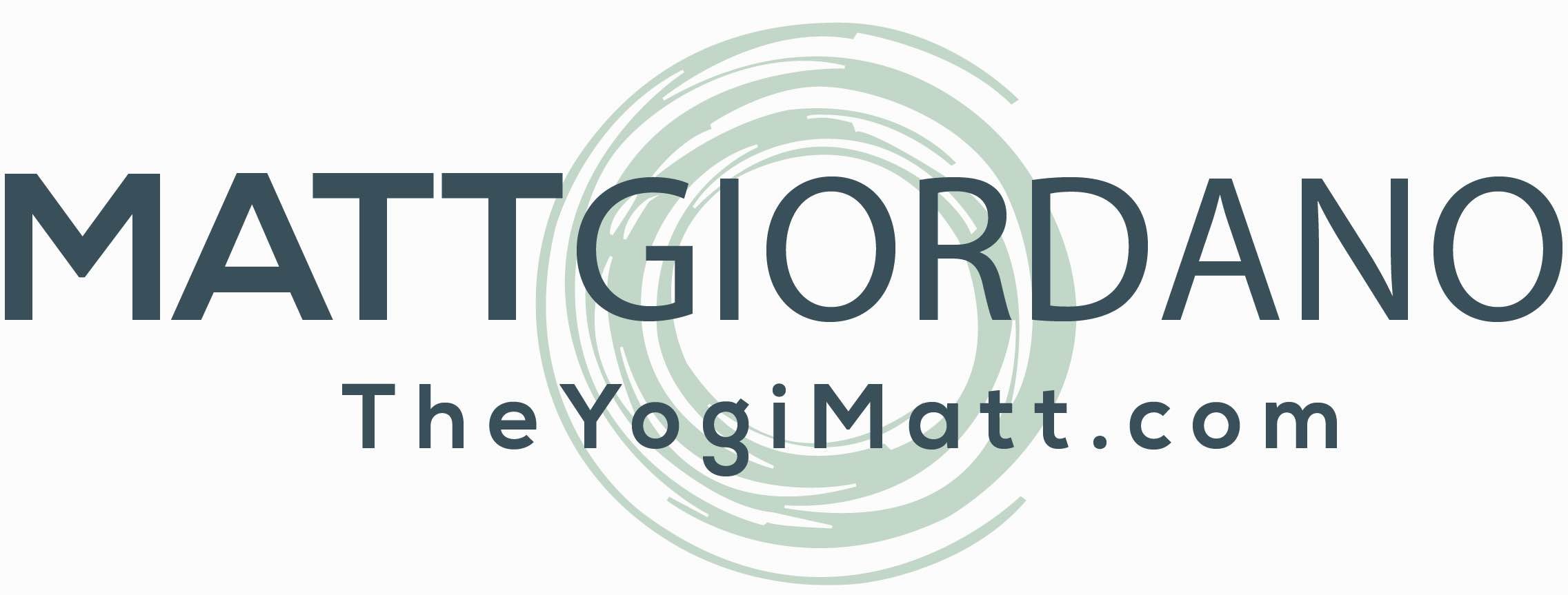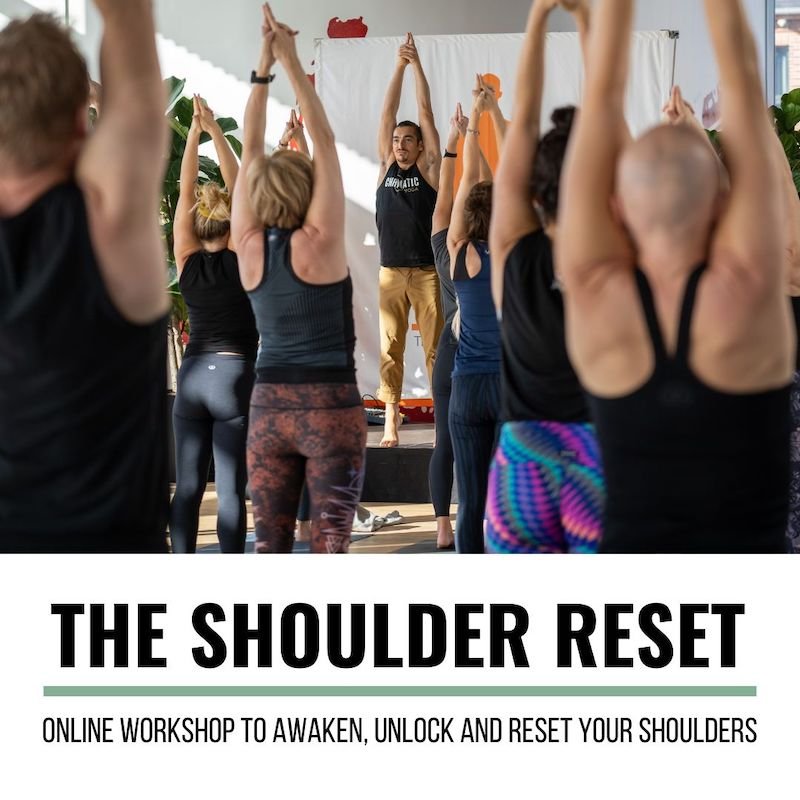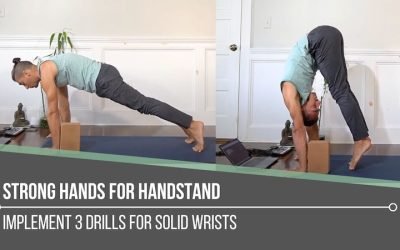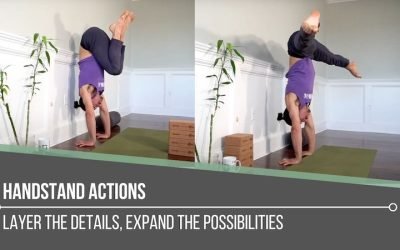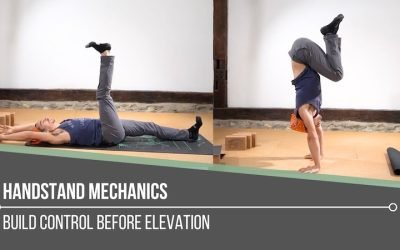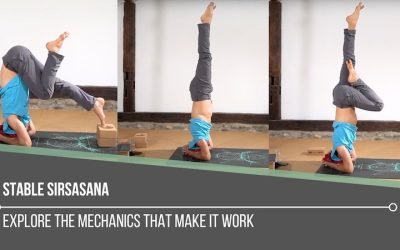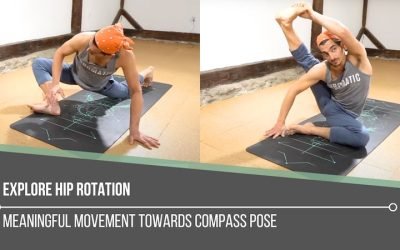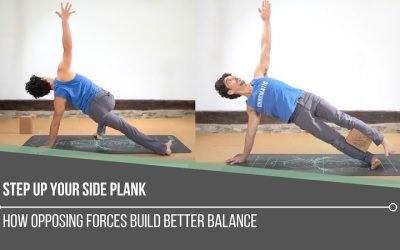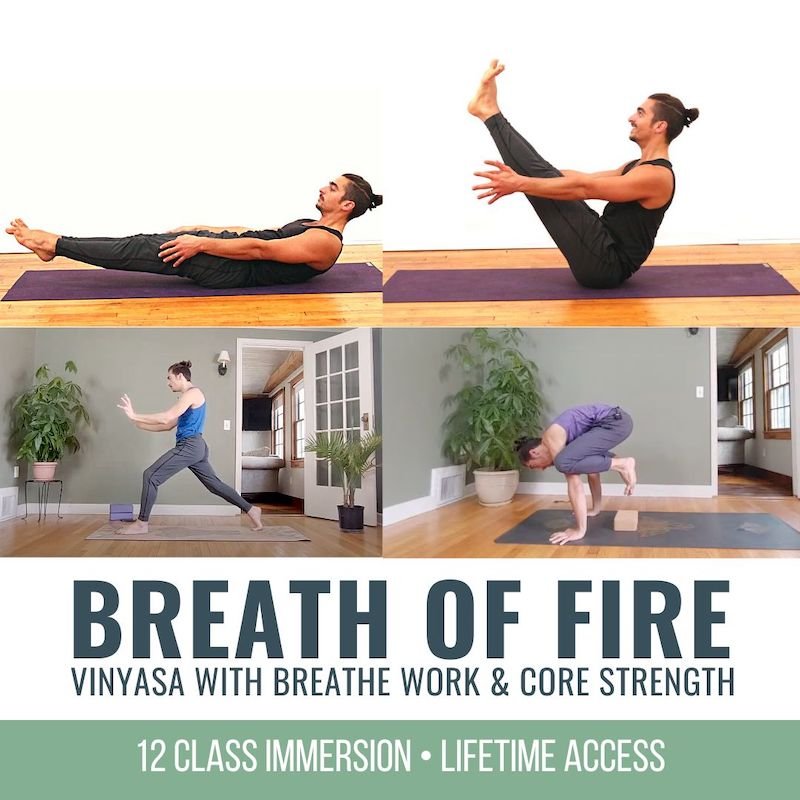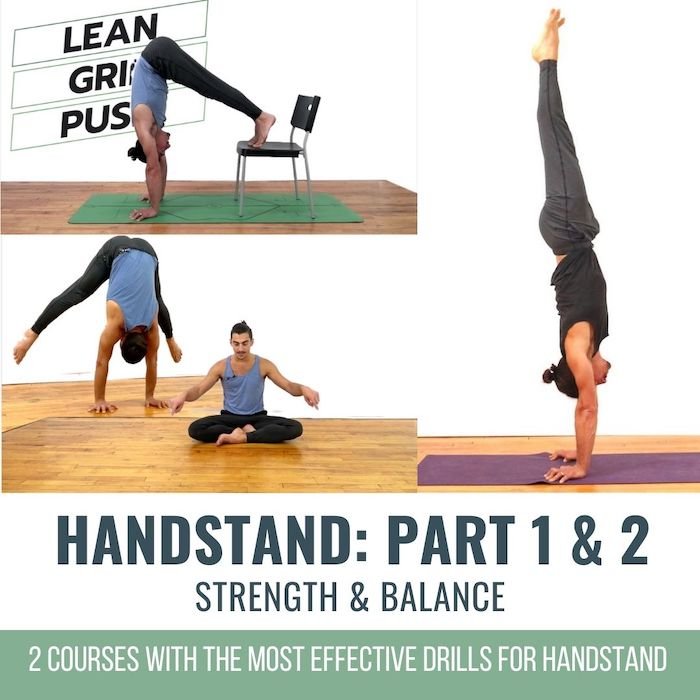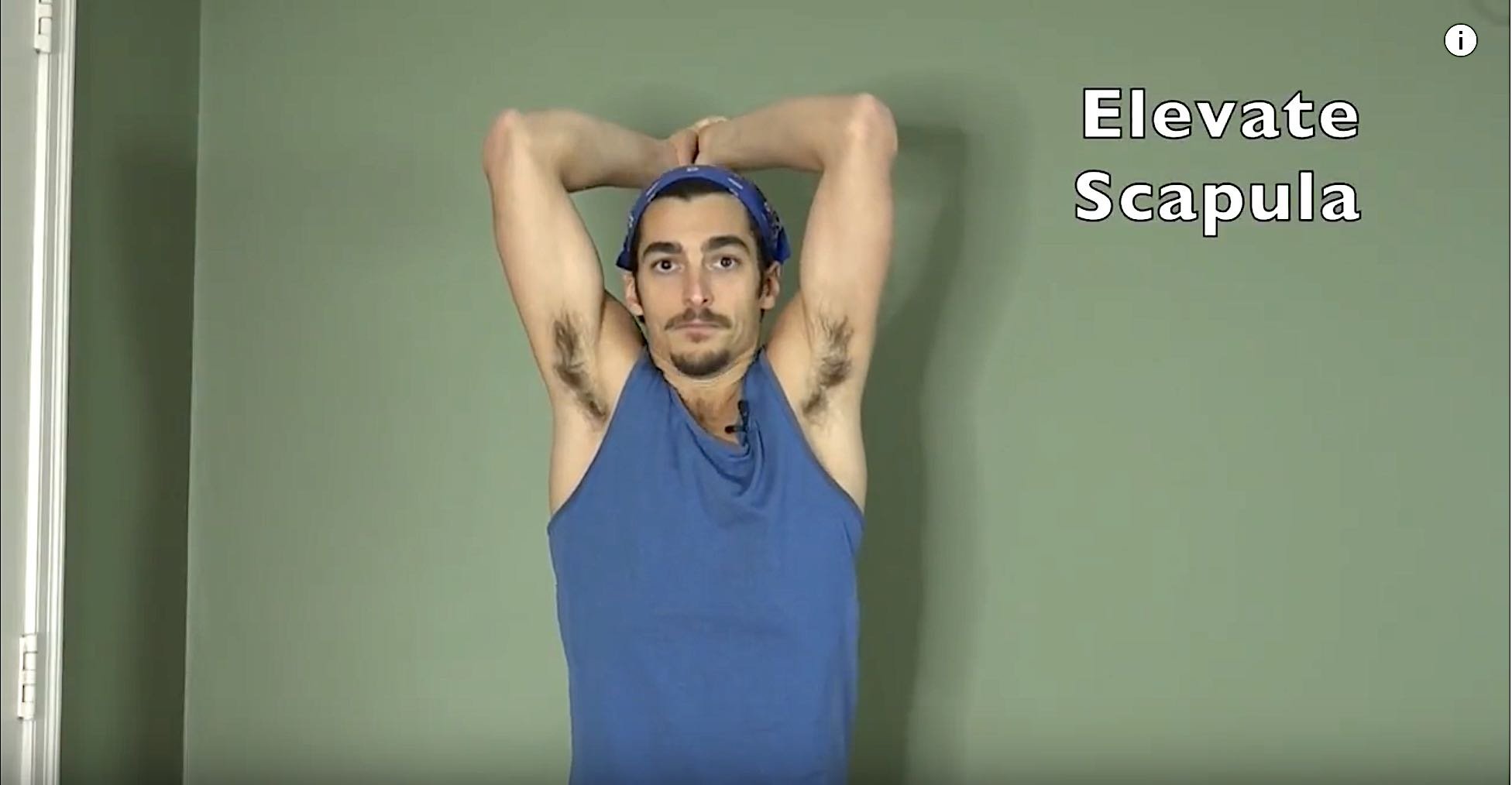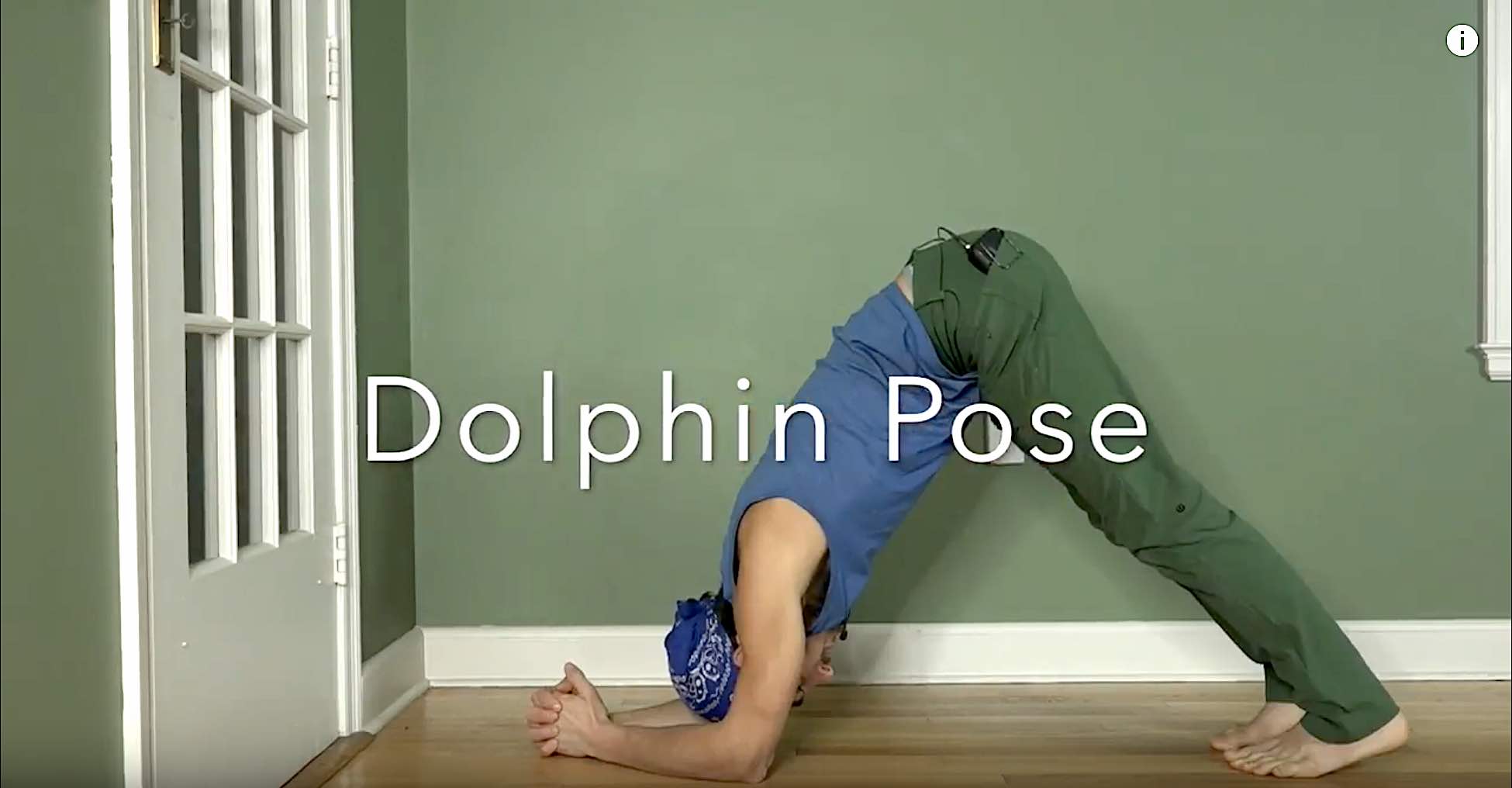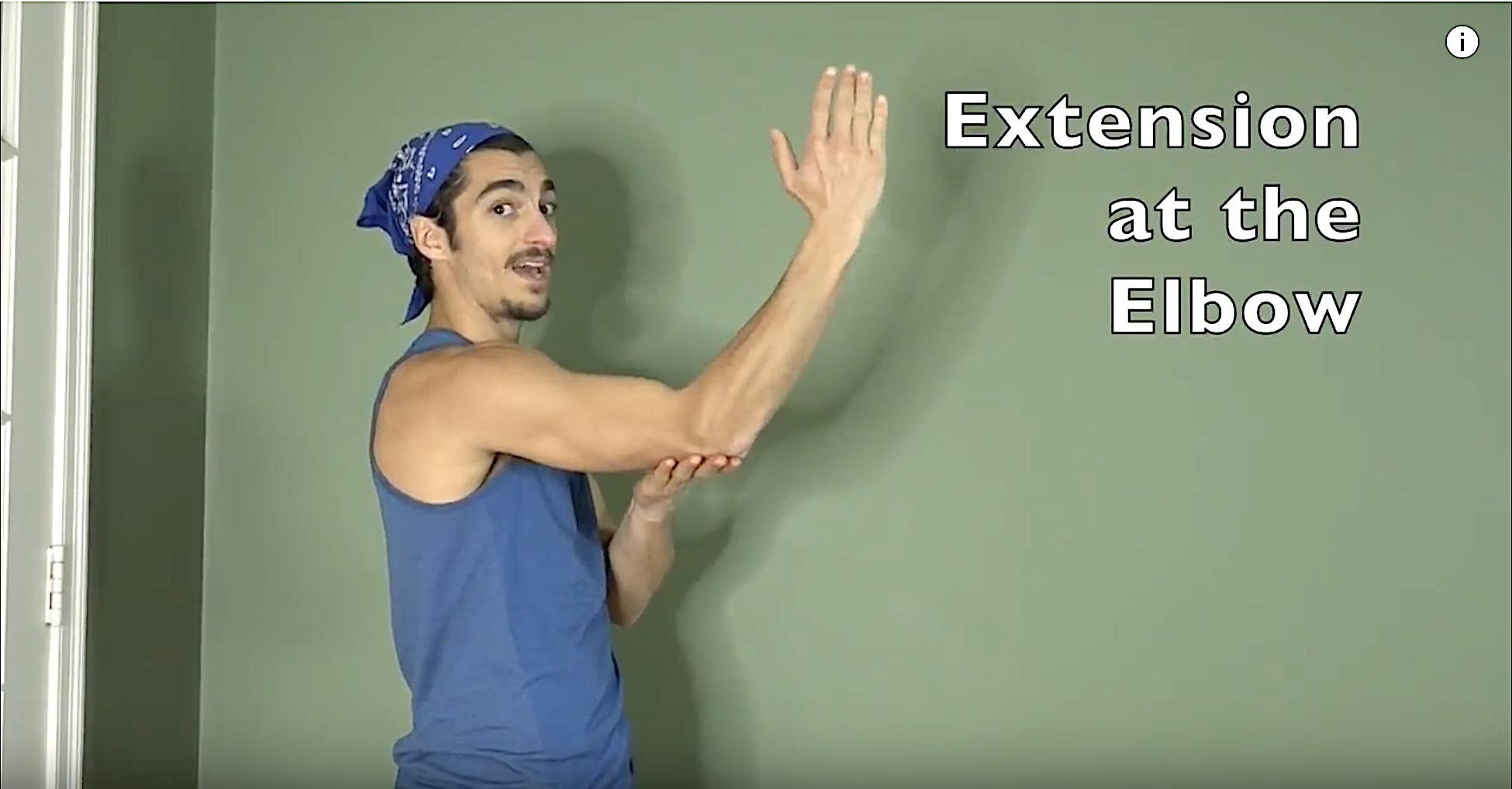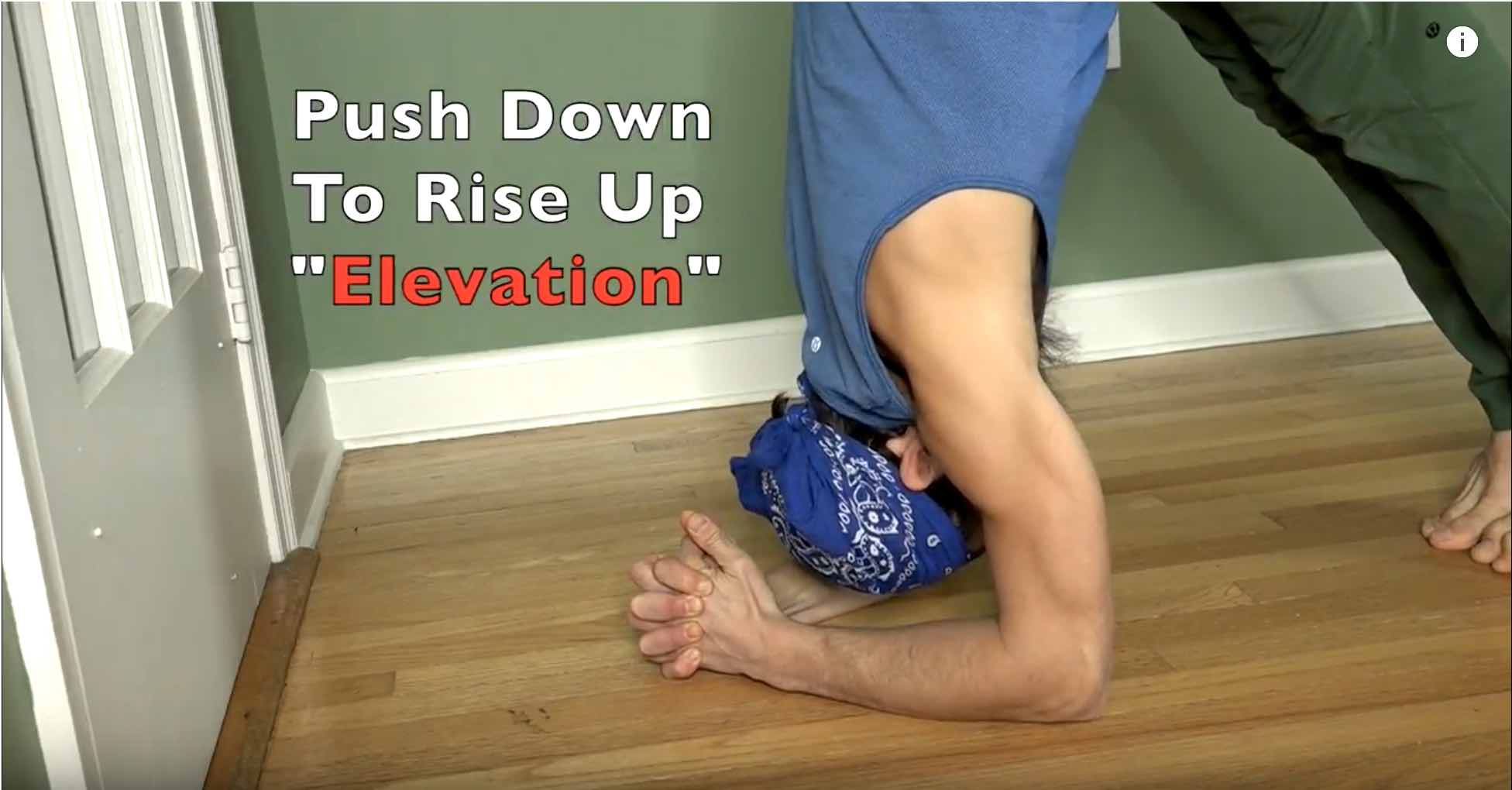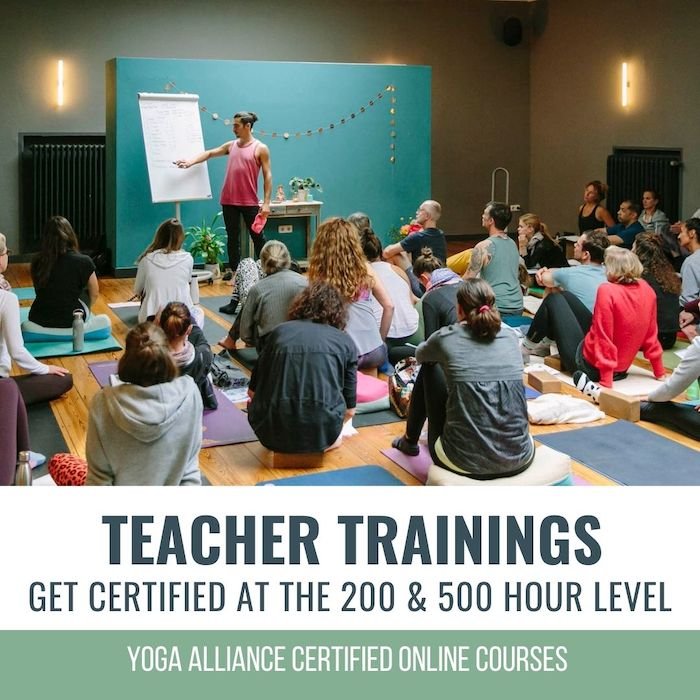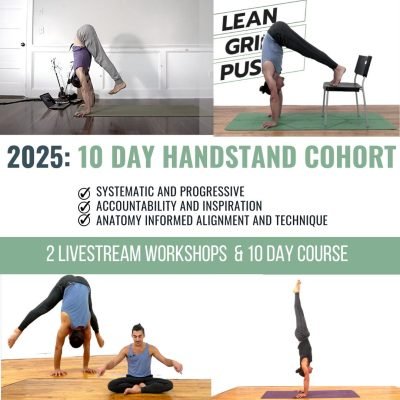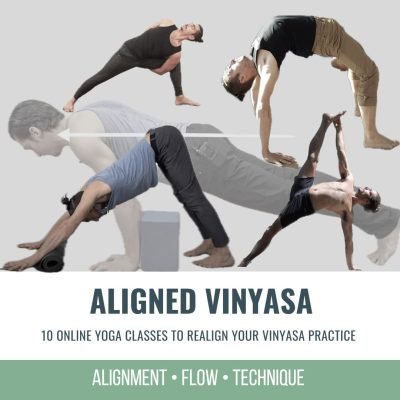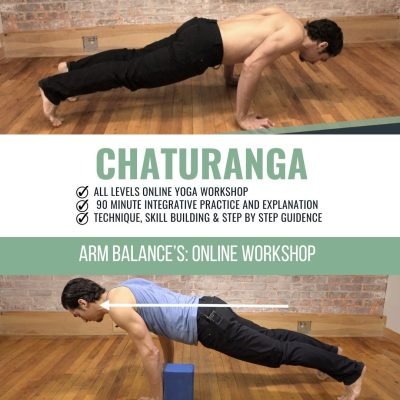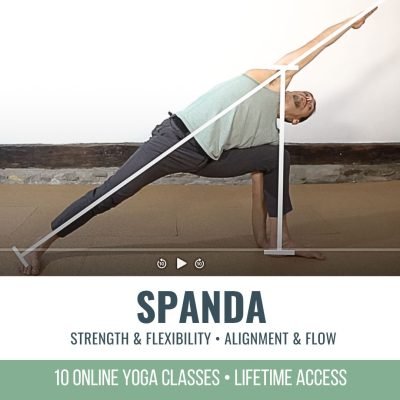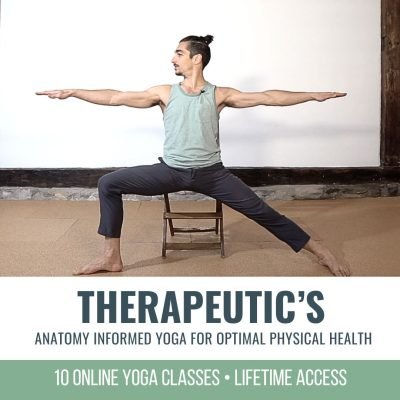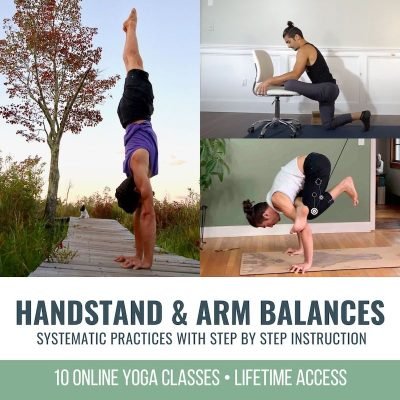Strong Hands For HandstandSTABILITYSTRONG HANDS FOR HANDSTAND When it comes to building strength for handstand, it starts at the base: our hands. Developing strong hands means targeting the wrist flexors, the very muscles that help create a trustworthy foundation....
Headstand and Forearm Stand
Headstand and Forearm Stand
Master This Imperative Shoulder Action
scapula elevation
HEADSTAND AND FOREARM STAND
Getting straight to the point, the imperative shoulder action in Headstand and Forearm Stand is elevation of the scapulae. This is the best way to fully participate in developing your potential in these postures. It may seem like a simple action, but it’s important to understand the broader scope of what’s involved. More than just lifting your shoulders up towards your ears, it’s the activation of muscles like the upper trapezius, serratus anterior, and the triceps, along with freedom in the neck, that help support this action. In today’s video, Matt outlines a number of drills that will assist you in finding the appropriate amount of activation and strength to achieve balance, stability, and freedom in Headstand and Forearm Stand.
THE SHOULDER RESET
2-HOUR LIVESTREAM WORKSHOP!
- Technique-infused 2-hour workshop
- Non-dogmatic alignment awareness
- Chest/heart flexibility
- Increase active range of motion of the shoulder
- Learn shoulder anatomy as you practice
- Strengthen rotator cuff for stability and shoulder health
- Gain access to shoulder-focused postures
- Debunk popular alignment
- Skillfully guided sequence by the founder of Chromatic Yoga, Matt Giordano
DOWNWARD DOG–DOLPHIN DRILL
This first drill can be approached in two different ways:
- The first approach to this Headstand drill starts in a shorter Downward-Facing Dog in which your body is still in a diagonal position. You then proceed to play with movement between moving your head gently down towards the ground, which requires a softening in the shoulders, and pushing the floor away with your forearms, creating more elevation of the scapulae and pushing your body back. Matt reminds you not to move back to a point where you feel pain in your shoulders as a result of greater compression in the joint.
- In the second approach, you’ll walk your feet in to become more vertical (closer to Headstand or Forearm Stand position). It’s important to note the slow lowering of your head towards the ground in order to build greater strength in the elevators of the scapulae.
WATCH THE VIDEO
HEADSTAND AND FOREARM STAND: MASTER THIS IMPERATIVE SHOULDER ACTION
HEADSTAND PREPARATION
It may be simpler to understand why elevation of the scapulae is important in Forearm Stand: The goal there is to take your head completely off of the ground. Why is elevation of the scapulae also imperative in Headstand? Well, implementing this action will reduce pressure on your cervical spine, that is, in the neck.
If you are going forward with this exploration, then you will feel some weight in your head in the starting position (feet down). To reduce this weight, Matt advises you to take your gaze towards your belly button to get longer in the back of your neck and/or to take the opportunity to strengthen your serratus muscles, along with the trapezius, by pushing the floor away to the degree that allows you to lift your head further away from the ground. This movement may be slight or moving more towards Forearm Stand.
200 HOUR ONLINE TEACHER TRAINING
GET CERTIFIED & DEEPEN YOUR YOGA PRACTICE
- Deepen your yoga practice
- Build confidence speaking in front of groups in person and online
- Learn foundational class structures and templates
- Learn techniques for a wide range of yoga postures
- Get certified and highly qualified to teach yoga
- Yoga Alliance Globally Recognized Certification Program
FOREARM STAND DRILLS
Once you’ve explored some of the added layers in Headstand from the video, you can move on to explore your potential in Forearm Stand. This of course requires increased elevation of the scapulae in order to lift your head off the ground.
This time, start with your head completely off the ground. Proceed by lifting one leg up at a time. If you’re close to a wall, like Matt is in the video, you’ll see how he demonstrates a controlled hop.
Now, if you’re looking for a bit more, you’ll see Matt’s demonstration utilizing a chair in the video. This can be more intense, but what Matt explains is that it’s helpful to remove the balance element from the drill because you can work on strengthening and deepening the connection to the awareness of the range required in the scapulae in order to lift.
300 HOUR ONLINE TEACHER TRAINING
GET 500 HOUR CERTIFIED AS A MASTER TEACHER
Master your skill set as a teacher through refined techniques, anatomy, biomechanics, sequencing, philosophy, meditation techniques, theming, yoga business, and much more!
- Get 500 hour certified
- Learn anatomy, biomechanics, asana techniques
- Expand your teaching skills
- Masterful sequencing and verbal delivery
- Learn meditation and breathwork techniques
- Transformative tools: theming, dharma talks, satsang
PROTECT YOUR NECK
Keep in mind, the best choice to avoid injury or the aggravation of any known discomfort in your neck is to stay away from Headstand completely. However, what’s offered in the video tutorial, assuming it’s safe for you to explore, are ways to intelligently approach the practice of Headstand and Forearm Stand with a deeper understanding of how to prepare your body. The drills teach you how to build strength and mobility concurrently. You’ll learn how to strengthen muscles like the trapezius, serratus anterior, and stabilizers of the neck, but the basis for this strengthening comes from the important action of elevating your scapulae. This action is the catalyst for unlocking your potential in these inversions.
Register today for The Shoulder Reset, a 2-hour livestream workshop on January 28th, where Matt will dive into technique, anatomy, and the biomechanics of the shoulder joint.
See you on the mat!
The 200 Hr. Teacher Training: Click Here to See the Next Start Date
The 300 Hr. Advanced Teacher Training: Click Here to See the Next Start Date
Article by Trish Curling
Videos Extracted From: Shoulder Mobility Immersion
ONLINE ANATOMY COURSE
- Accessible, exciting, and easy to learn
- Anatomy and biomechanics for yoga
- Appropriate for both teachers and students
- Learn joint alignment vs pose alignment
- Demystify yoga poses and transitions
- Release aches and pains
- Learn how to avoid common injuries
- Caters to all levels with modifications and props
- 20 hours Continued Education Credits with Yoga Alliance
- 20 hours toward Chromatic Yoga Certification and 300 Hour
- Lifetime access
Continue Learning
Strong Hands For Handstand
Handstand Actions
Handstand ActionsLEAN, GRIP, PUSHHANDSTAND ACTIONS Handstand isn’t something we conquer in a single class, it’s a layered process that demands repetition and refinement. There are certain key handstand actions that are non-negotiable: lifting the shoulders up to the...
Handstand Mechanics
Handstand MechanicsINVERSIONHANDSTAND MECHANICS Stability, strength, and coordination come together in the pursuit of mastering handstand mechanics. One of the most critical foundations is internal rotation at the hip joints, which can aid with certain entries and...
Stable Sirsasana
Stable SirsasanaHEADSTANDSTABLE SIRSASANA Creating a stable Sirsasana is less about the final pose and more about the mechanics that lead us there. From weight transfer and spinal alignment to hamstring flexibility and shoulder engagement, each layer matters. Unlike...
Explore Hip Rotation
Explore Hip RotationSURYA YANTRASANAEXPLORE HIP ROTATION Hip rotation isn’t just an anatomical concept—it’s an open invitation to become more intimate with our body’s story. In yoga, we often live in lateral (external) rotation, especially in hip-opening postures....
Step Up Your Side Plank
Step Up Your Side PlankVASISTHASANASTEP UP YOUR SIDE PLANK Side Plank might look simple, but true proficiency starts in the details. One of the keys to refining the posture is learning how opposing muscle groups create an isometric contraction—a subtle engagement that...
THE FREE TECHNIQUE PACK
When You Subscribe, You Will Get Instant Access to
- the Technique Pack: 15 yoga pose breakdowns
- exclusive online course discounts
- exclusive blogs and videos
